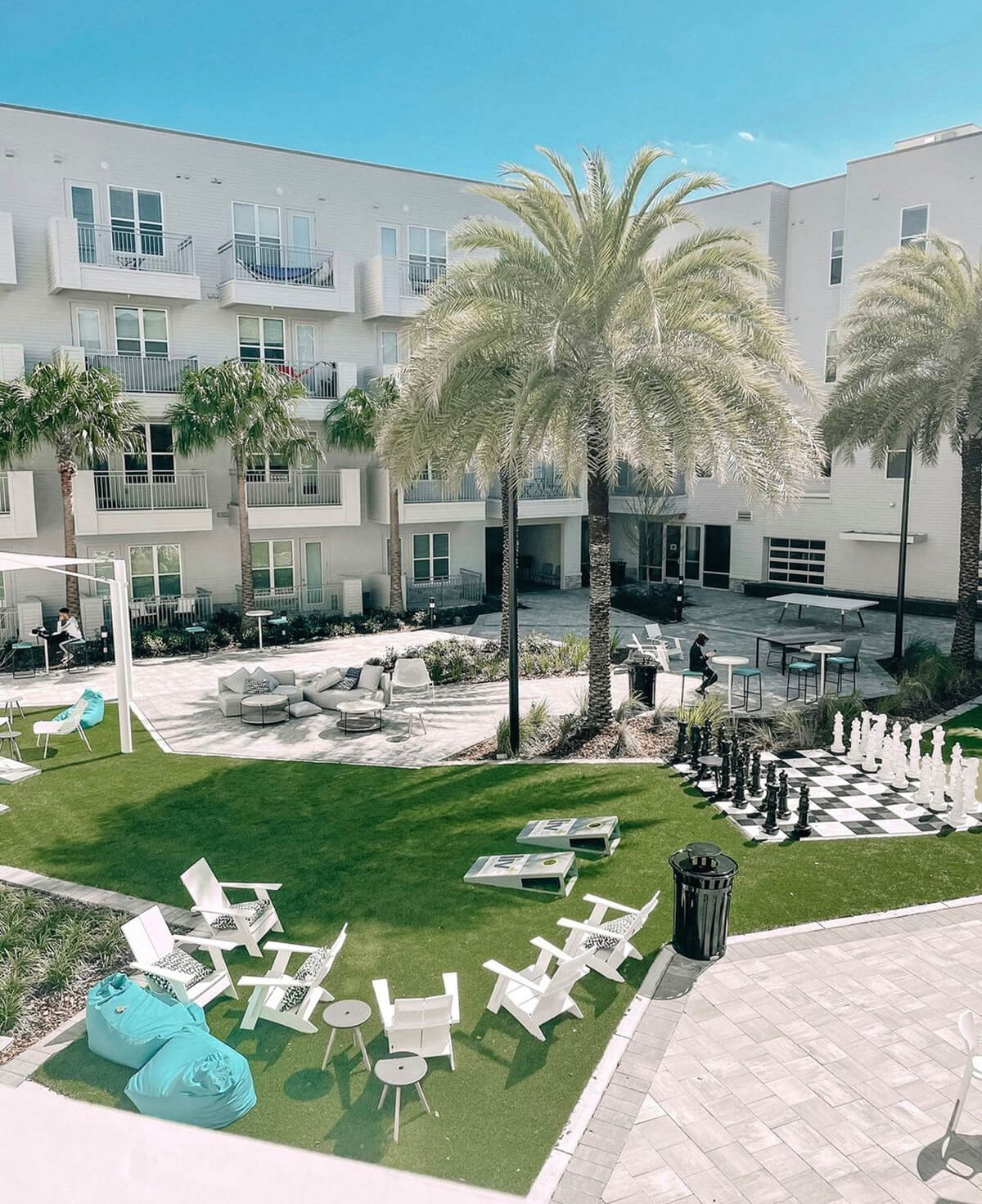The Importance Of Developing With Green Space In Mind

From the Desk of the COO
As a real estate developer we’re known for constructing buildings, and rightfully so. Part of the allure that has been passed down from my father, Stark Enterprises founder Bob Stark, is the joy and fulfillment of creating something from nothing. Or as he likes to put it, “like planting a seed and watching it grow”. While building out the physical storefronts, residences, or offices is the main component of any new project, that metaphor brings to light one of the most underrated aspects of development: green space.
The importance of incorporating open outdoor spaces with elements of water or vegetation cannot be stressed enough. The built environment will almost always take precedence over the natural and there’s good reason for that. Ensuring building codes are strictly enforced is key to maintaining the physical health and safety of those residing in the structure. There must be zero risk of bodily danger associated with the built portions of the project. However, it is the inclusion of green space that will ultimately add the finishing touches that have proven time and again to attract prospective residents/tenants. More importantly, it will actively help improve their long-term mental and emotional well-being.
According to the National Center for Biotechnology Information, U.S. National Library of Medicine, “Systematic reviews have demonstrated relationships between green space and mental well-being across the course of life. Specifically, evidence shows that increased accessibility to green space and residing in areas with increased greenness are associated with improved perceived mental health.”
In an interesting overview of our evolutionary migration from open, green spaces to dense, urban environments, New Scientist also noted that “the past few years have seen an explosion of research finding concrete links between increased exposure to nature and not just improved physical health, but better mental health, too.”
Think about some of your favorite places to visit in your neighborhood, your city, your region, or even across the world. There’s a good chance that they are, or include, substantial open green spaces. After centuries of having a direct relationship to nature, our minds (and bodies) still require that close connection to the elements no matter how “civilized” we become. With more than half of the world’s population inhabiting urban areas, there is an afforestation movement underway to greenify bare concrete city spaces, and ensure all new developments include an abundance of natural elements.
With that in mind, our planning and development teams work hard to not just include green spaces and natural elements in their designs, but thoughtfully study the existing landscape to seamlessly incorporate indigenous plant life and vegetation known to support the local ecosystem. We also work with professional garden centers and experienced horticulturalists to ensure that we are making the correct decisions in the selection process and employ onsite maintenance teams to monitor and tend to the gardens and green spaces.
From Crocker Park and Eton Chagrin Boulevard in Ohio to our Liv+ developments in Texas and Florida (as well as everywhere in between), beautifying / expanding our outdoor spaces and adding green elements in the form of planters, flower boxes, and even the ever-popular social media flower wall, have become an increasingly important aspect of our operations. As we learn more about the strong connection between nature and health, we become more determined to create welcoming environments that reflect and celebrate this symbiosis. Yes, we build safe, functional buildings, but we also build communities that help nurture and foster relationships. And there’s no relationship more important than you and your mental health. 

Sincerely,
Ezra Stark
Chief Operating Officer

